Competency Matrices
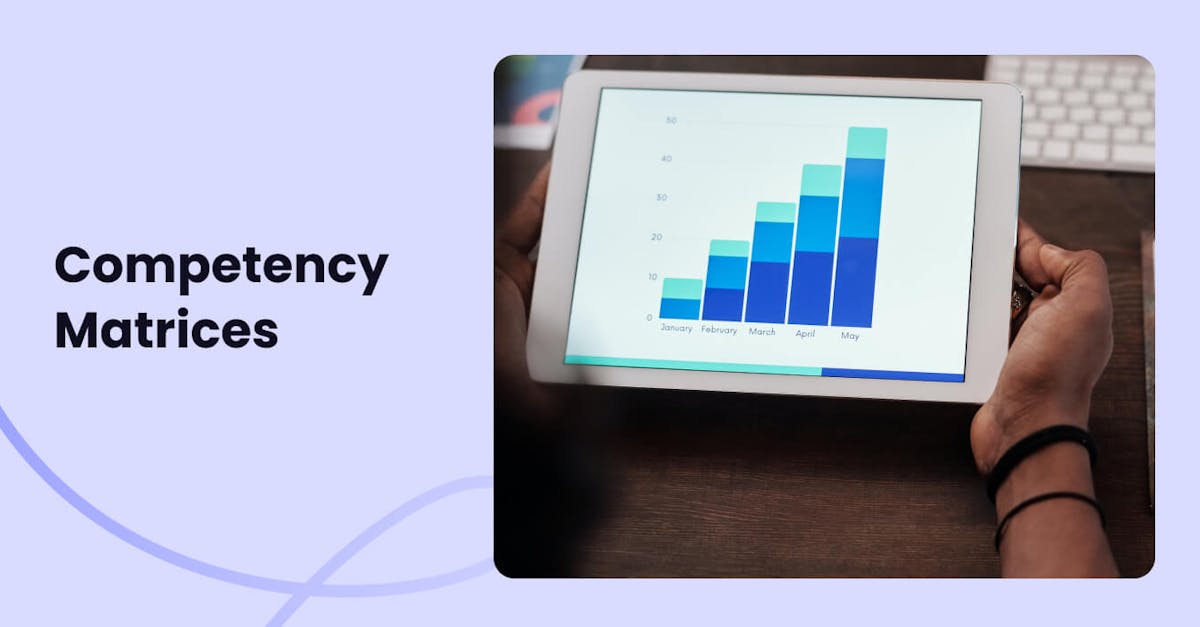
Competency models are groups of can-do benchmarks that an employee must meet or fulfill in order to be successful in a particular role or position. Competency matrices are the “outputs of competency assessments”. In other words, they are the outcomes of competency models—maps or inventories of everyone in your company who has met the necessary benchmarks at certain levels.
There are lots of similar terms such as skills matrix, competency matrix, and capability matrix. While all have some overlap, in this article, we are defining a competency matrix as not only showing which skills each of your employees has but also their competency (or ability level) for each of those skills.
Below is a competency matrix from Wikimedia Commons. Let’s look at the first section: SPRÅK (language). This section reports not only which languages the employees know but how well they know them. From the key, we see that 4 = Expert. We can assume then that the lower numbers show less competence. So we can understand that while all the employees know Finnish (Finska), not everyone is as able.
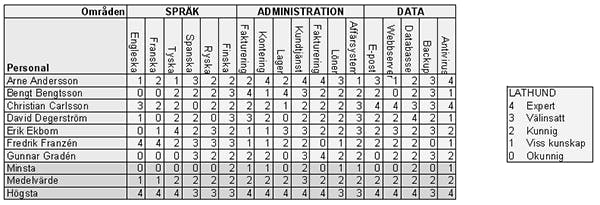
Benefits of competency matrices
Proper people-task matching
The example above effectively introduces one of the main benefits of competency matrices: the ability to select the best workers for each task. In this example, if you are attending a business expo in which the common language will be English, you would want to choose Fredrik Franzen and/or Hogsta as your representatives since they are both at a 4 or expert level.
When you can select the most qualified employees for the job, you optimize your resources. The work gets done in the best time frame and is of the highest quality possible. Conversely, you reduce situations in which we mismatch people and tasks.
Plug the gaps
Another great benefit is identifying missing or low-level competencies, then training your workers as needed. It seems like a no-brainer, but in reality, many enterprises are not aware of which skills their employees are missing. Even more common are situations in which employees do have the skills needed but not at the levels required for the enterprise to shine.
Build for the future
If you know where people are now, you can more accurately train them for the future.
One aspect is the future company needs. In the example matrix above, none of the employees are experts in Spanish (Spanska). Should you wish to expand into Spanish-speaking markets, it would be an excellent idea to increase the Spanish competency of your team members.
Another aspect is employee career development. Perhaps the worker Medelvarde is looking to move into higher management. You can easily identify which skill competencies must be increased in order for Medelvarde to qualify.
Uses of competency matrices
Identify who can complete their training
You can usually think about competency matrices with regard to reporting work skills. Yet, a very interesting use is identifying employee training competencies. In other words, how well does an employee learn? How serious of a learner are they? This is a vital step when selecting workers for special training.
Let’s say that your company IS expanding into Spanish-speaking markets. At the moment, you have several employees at competency 3. Who will you choose to train and invest money in?
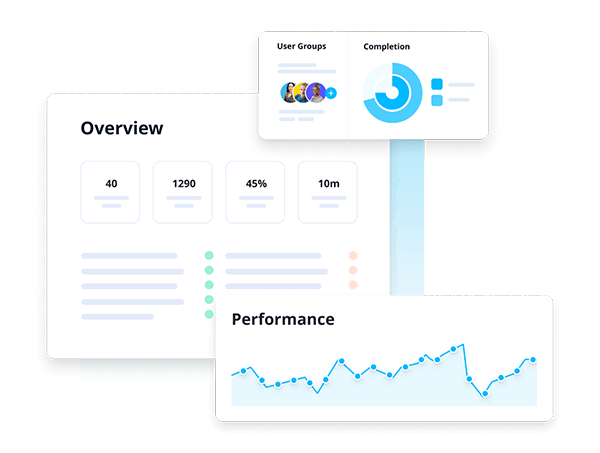
Fortunately, you can train your teams through learning management systems or LMS such as EdApp. Through these tools, you’ll have access to a comprehensive analytics suite and performance dashboard. This will further allow you to create a competency matrix of your employees as learners.
The dashboard can give you details such as:
- What percentage of each course has been completed
- How many courses the employee has completed within a particular time frame
- On average, how long it takes them to complete a course
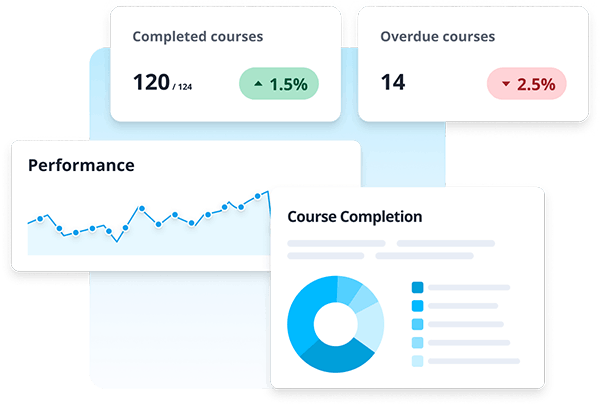
So within the group of Spanish level 3 workers shown in the matrix example above, it would make sense to begin with the one(s) who are the most efficient trainees. They’re the ones who are most likely to complete their training in the required time frame.
Is this kind of assessment acceptable?
Not only is this acceptable, but it’s also preferred.
All employees deserve training to advance their careers. At the same time, it is important to manage an enterprise’s resources in the most effective way possible for the benefit of all. Assessing the learning potential of trainees is a valid way to do this.
For almost 40 years (since 1987), people have been using the Learning Potential Assessment Device (LAPD). The series of tasks and questions found here measure a person’s cognitive abilities as well as other factors which influence learning outcomes.
Data from LAPD and other studies show that a person’s learning potential is not just a factor in their cognitive abilities. A whole range of other factors such as motivation, personality, and coping style significantly influence the success level of a learner or trainee.
When we assess a worker’s learning potential, we are actually increasing their chance of success. The more accurate the assessment of a person’s learning potential, the more effectively the trainer can mediate the learning experience to create more positive outcomes.
For example, if we know that Trainee X tends to take a long time to complete their training program successfully, we will not stress them out (and encourage failure) by putting them on a longer training schedule.
Assessing your company training program
Did you ever think of using competency matrices to assess your company training?
We usually assess our training by how well our trainees master the material. Yet, what if there are places (lessons, modules, tasks, etc.) where our training content and/or methods could be improved?
When your training is done via training platforms, you can use analytics features to gain insight. EdApp’s course progress report is one example. It shows overall progress per course. You can then delve further into the data to see open and completion rates, the average length of time spent on each slide, and the percentage of users who answered a question correctly.
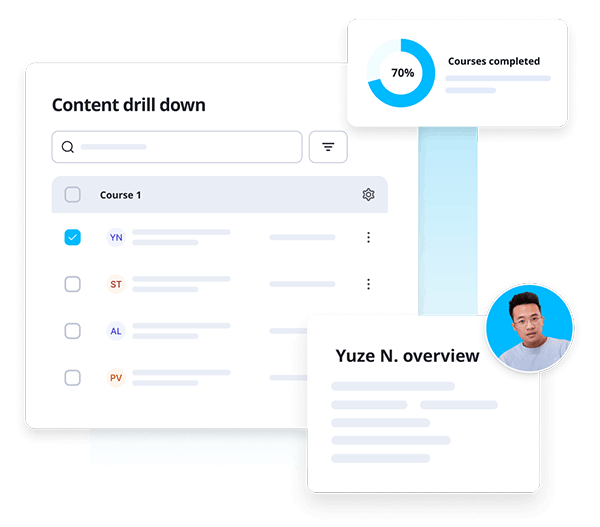
When you look at this data, you may see generalities such as:
- Trainees are spending more time on one or several slides in the course as compared to other slides in the course or in other courses.
- The percentage of users who answered a certain question (or questions) correctly is much lower than most of your other questions in this course or others.
- The average number of time spent in a lesson is much greater than the average time spent in most of your other lessons in this course or overall.
All of these are opportunities to improve your training material. Perhaps the content is ‘jumping’ forward too quickly with not enough practice between jumps. Maybe the material is not being explained clearly enough. It could even be that previous lessons, modules, and/or courses have not sufficiently prepared your trainees to handle the information at this level.
Try EdApp at no cost to unleash the full potential of your team’s competency matrices!
Author
Guest Author Lisa Aharon
Lisa Aharon is a guest author at EdApp, offering varied experience as a computer programmer/analyst, technical writer, secretary/bookkeeper, copy editor, creative writer, and English teacher.
